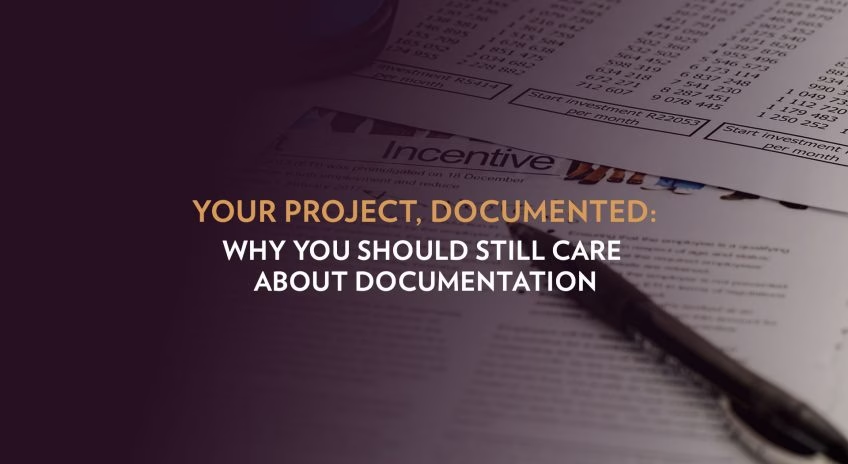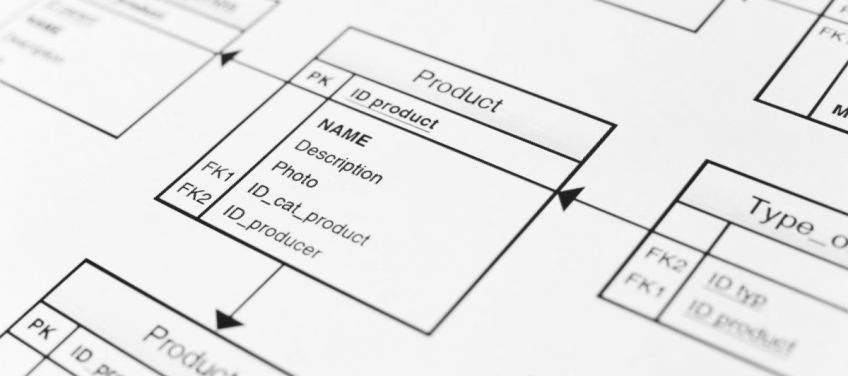- Developers
- Developer Blog
- Project Management Tips
- What are Software Documentation Best Practices That Work?

profile

By Aran Davies
Verified Expert
8 years of experience
Aran Davies is a full-stack software development engineer and tech writer with experience in Web and Mobile technologies. He is a tech nomad and has seen it all.
Are you planning your software documentation and want to know 6 software documentation best practices that work?
You’ve come to the right place.
Why do software projects still fail? There are many reasons, e.g., a lack of management commitment, cutting corners, inadequate project planning, flawed selection of technologies, scope creep, and insufficient communication.
Read “Common Reasons why IT Projects Fail” to know more.
A big contributing factor lies in poor documentation. In many instances, a project manager will retain important aspects of the project plan in their head. As a result, these details are unclear to the rest of the team.
Tasks and instructions must have been spelled out verbally, with only half-baked information reaching the IT architect. Communication remained word-of-mouth focused, resulting in an insufficient flow of information.
This example shows just how important software project documentation really is. It can make or break a project. If you want to ensure your project’s success, one of the most important things is to ensure you have your project documentation in order.
In this article, to help you make sure that you get this aspect of project planning right, I will explain software documentation best practices.
First, let’s discuss how can be involved in software documentation and what are some of the software documentation types you might be working on as a part of your software development project.
Importance of software documentation


Get a complimentary discovery call and a free ballpark estimate for your project
Trusted by 100x of startups and companies like
We are all customers. Whenever something is of use to us, we are its’ customers. This basic premise is equally true in the IT industry. Project management software like Trello has its’ customers.
A cloud computing platform like Amazon Web Services (AWS) has its’ customers. Unless customers understand the product, they can’t use it. The product will ultimately lose customers.
Extend this argument further. Are you an IT architect? Unless the business analyst spells out the business requirements of the customer of the proposed product, you can’t design an IT architecture for the product/solution. The output of the business analyst is your input. You are the customer of that document!
Similarly, if the technical specifications aren’t good enough, coders can’t use them. On the other hand, if the test cases aren’t well documented, the test specialist can’t execute them. If a company monetizes its data using APIs, then the developers using those APIs are its customers. APIs need good documentation, otherwise, the ‘customers’ will find other APIs.
Are you an IT PM? When you present your project to the senior management for their review, or when the internal quality assurance team audits your project, your project documentation is the ‘product’. They are your customers. They need to understand your project from those documents.
To put it simply, expand your horizon when thinking about customers, and the importance of good software documentation becomes self-explanatory. Read more about this in “Need for better documentation”.
What are the various types of software documentation?

This question isn’t a straightforward one. The kind of project, i.e., services or product development influences the type of documentation needed. The project phase has a bearing on the type of documentation, for e.g., the execution phase requires a different kind of documentation than a ‘Request for Proposal’ (RFP) phase.
Broadly, the following are the broad categories of software documentation:
- A proposal: A provider sends it to a prospective customer.
- Before an organization approves a project, it undertakes due diligence. A feasibility study is a document that’s produced at this point.
- Requirements analysis documents: Business analysts study customers’ business requirements and translate it into technical requirements.
- Software design documents: IT architects or analysts study the technical requirements and develop the design document. This will be an input to the development process.
- Coding documents: This is a broad category. It includes the code, comments, and constraints if any.
- Testing documents: Yet another broad category, this includes test plans, test cases, requirements traceability matrix with reference to test cases, test results, testing review logs, etc.
- Review records: Either peer reviewers or independent quality assurance professionals may produce these. They review project artifacts and note their comments.
- Guides and checklists: These can be of various kinds, e.g., coding guidelines, review checklists, etc.
- Project intellectual capital documents: Typically produced at the end of the project, these aim to enrich organizational process assets. In some cases, the organization might even want to file patent applications using these documents.
- Project management documents: This is another broad category. Anything that comes under the ‘Project Management System Summary’ (PMSS) can be considered in this category.
- Licenses: If a project procures software for the execution, the team needs to maintain licenses.
Read more about it in “Types of software documentation”.
Software documentation best practices: #1 is automation
This is a good solution for documents you create frequently. Remember that you will be able to use this approach for commonly-used documents only. This isn’t the appropriate solution for documents for rare or special circumstances.
Let me illustrate with an example. When you submit a proposal to your customer, you can use an automated snapshot of company credentials. However, in the same proposal, you will need to manually create reference case studies since those pertain to certain industries or use cases.
Automating the creation of common documents reduces manual errors. It saves valuable time. Consider using reputed 3rd party solutions for automating your documentation.
One example is Templafy. HotDocs is another platform that enables you to automate documentation, furthermore, you can also create software documentation templates for frequently used documents.
Best practice #2: Create a document hierarchy
You might be asking “How to write software documentation that’s effective?”. The key operative word here is “effective”. You need to define effectiveness first. This varies according to the context.
If you are going in for a meeting with your customer trying to explain the features of your ‘Platform as a Service’ (PaaS) offering, an effective document is what helps you to sell. Think about it for a moment.
A startup trying to launch its web app is looking for a PaaS provider to expedite its development. Will they buy from you by just seeing an elaborate document? They probably won’t!
Hire expert developers for your next project
1,200 top developers
us since 2016
In this case, the customer would need a demonstration of how quickly a web app can be created using your PaaS. A document will be required in this discussion, but only for anchoring the discussion.
Your presentation to this customer needs to focus on the demonstrable features of your PaaS, while the document just helps to remind customers about the value of your platform.
Such a document should be prepared with utmost care. It should do nothing to take away the focus from the demo, however, it should convey what you offer.
Compare this with a document that your development team will use as a checklist during their development process. This document should contain plenty of details.
Differentiating documents in this manner is called ‘creating a document hierarchy’. You categorize your documents into internal, external, and customer-facing. Read more about this hierarchy here.
Pay utmost attention to the customer-facing, and external documents. Put your best people on the job for these. On the other hand, try techniques such as automation for internal documents, to improve efficiency.
Best practice #3: Manage the documentation process
To get sustained value from your IT documentation, you need to manage the processes that produce them. If you only react to an instance of sub-optimal documentation after it has reached your customers, you aren’t doing enough. Proactive management of the process is imperative.
Build a system for creating the software technical documentation. Establish a team structure, with specific roles and responsibilities. Formulate guidelines for creating comprehensive software documentation. Build a process to test the documents. Establish metrics for various stages of the documentation process.
Can your team use the review checklist you recently rolled out? How many defects could they detect using it? If you unveiled a guideline to create RESTful APIs recently, are your developers able to do their job using it? How many questions did your call center receive from users of your SaaS product? How often are your call-center representatives solving ‘Level-1’ tickets using the knowledge database they have?
The above are just a few examples of metrics you should establish. The point is that you can only manage what you measure. Read “The importance of implementing effective metrics” for more details.
Develop a clear standard of performance in your IT documentation team. Reward practitioners that produce quality products. Coach and manage the performance of practitioners that consistently produce sub-optimal documents. Make sure they can get first-hand feedback from users of their documents.
Best practice #4 for software development documentation: Visibly engage your team
This point is a continuation of what I just stated about managing the process. Let’s understand a hard reality. Software isn’t a tangible good like that fancy watch or smartphone. It’s intangible, the value of software is experienced by using it first.
Consequently, every step of the software development process has abstract elements. Software documentation aims to capture these abstractions into words and/or graphics. That’s not easy!
While you certainly need to build a team that has the right talent for software documentation, you also need to provide them with the best tools. This can include automation platforms, templates, and aids.
The team should clearly know where they can find help. Your team should also be motivated by the intrinsic value of their work. That’s the only way for sustained motivation in a team.
Your team should be able to see how their customers are deriving value from what they produce. This should be as clearly visible as possible. Hearing directly from your customers, seeing how your customers use their work products make a big difference.
Read more about employee engagement in “8 results-driven reasons you need employee engagement”.
Hire expert developers for your next project
Best practice #5 to write software documentation: Use graphics and visual aids
When documenting in the software industry, always keep in mind that software is just a tool. If you are selling your software to a start-up, they are likely buying it to support their core business. Their core business has a higher priority for them, not your software!
Consequently, they will look to spend as little time possible on your software, while they try to spend as much time as possible on their core business.
It follows that they will look to spend even less time on your documentation. You need to make your documents as easy for them as you can. Using graphics and other visual aids is hence an important one among software documentation best practices.
I illustrate this with a few examples, as follows:
- If you are writing user documentation covers manuals, consider using screen prints and schematic diagrams.
- In case your IT architect is writing up the architecture decision matrix for a review meeting with your customers, then he should use clearly enumerated blocks to represent components.
- Create a clear flow diagram depicting how your IT solution will work if you are presenting it to your customer as part of an RFP evaluation process
- If you are submitting an RFP for an annuity IT application maintenance contract and need to show progressive cost savings to your customer, make sure you use relevant graphs and charts.
Read more about this best practice in “IT documentation best practices”.
Software documentation best practices #6: Build and sustain knowledge
You and your team will likely learn a lot from your software documentation endeavor. No amount of theoretical knowledge can replace practical hands-on learning. This will be the case for your team too.
Establish a robust process to capture the lessons learned on the job. Build a knowledge base, however, don’t stop there. You need to encourage your team to use it. The team should also enrich this knowledge base in an ongoing manner.
Entrust responsibility of maintaining the knowledge base to specific persons. Reward usage and enrichment of the knowledge base. Building a ‘Process Asset Library’ (PAL) is a valuable experience.
Read more about PALs in “What is process asset library (PAL)?”.
Final Thoughts
Software documentation in its various forms makes work easier for your development team members and also the end-users of your product.
Professional software development individuals are able to form well-written documents keeping in view the best practices of software documentation.
If, you as a business CEO or CTO, do not find your team members following the best software documentation practices and want to take help from professionals in software development, management, and documentation, DevTeam.Space can help you.
Write to us your initial software project requirements via this form, and one of our account managers will get back to you to discuss how our field-expert software developers community can help you.
Frequently Asked Questions
You need to create a file that contains your API documentation, your code, and code conventions. You should also include additional information such as the authors, etc. For more detailed information, read this article.
It allows product owners to keep track of their applications and their development. Maintenance, for example, is made much more straightforward when developers have access to accurate and detailed documentation.
System documentation
User documentation

Alexey Semeney
Founder of DevTeam.Space
Hire Alexey and His Team To Build a Great Product
Alexey is the founder of DevTeam.Space. He is award nominee among TOP 26 mentors of FI's 'Global Startup Mentor Awards'.
Alexey is Expert Startup Review Panel member and advices the oldest angel investment group in Silicon Valley on products investment deals.


